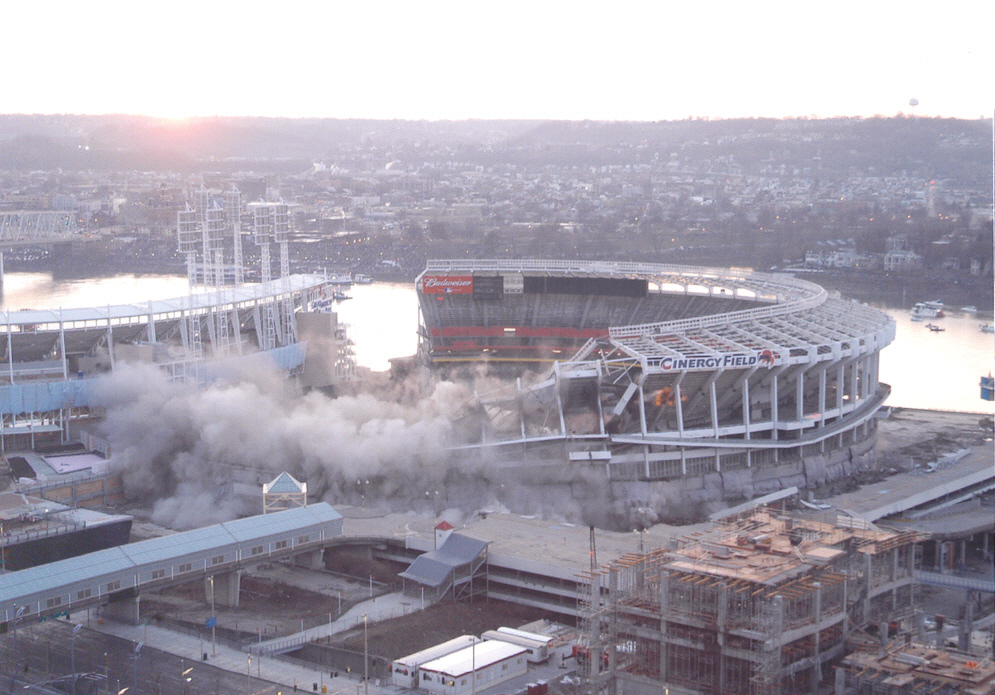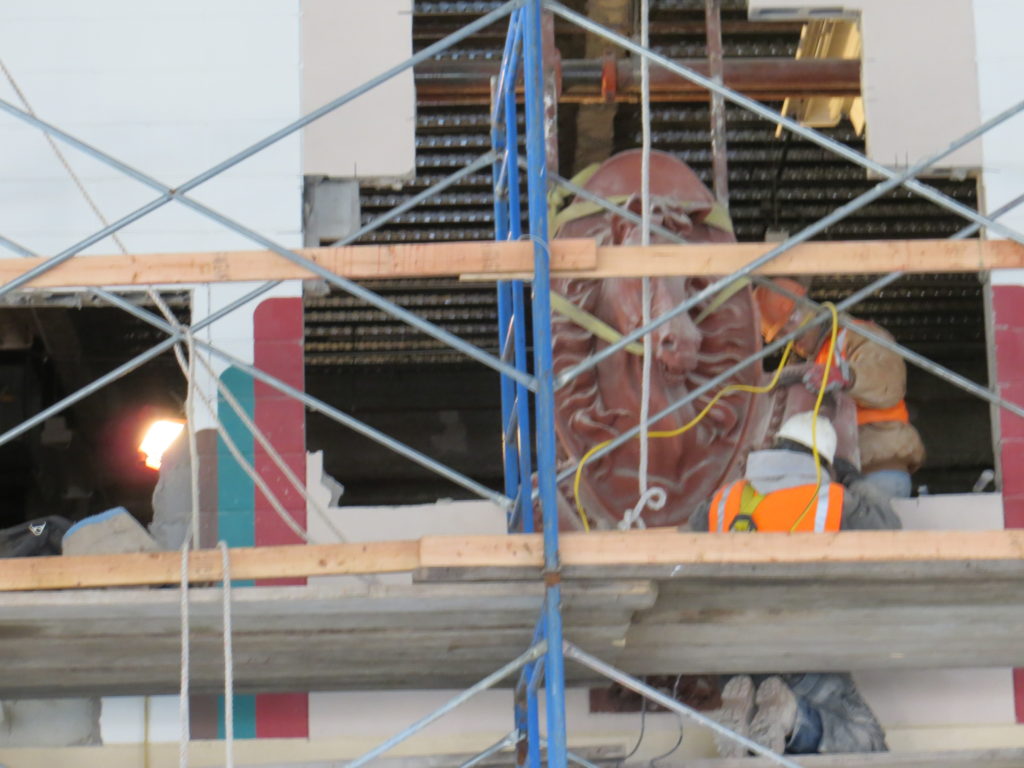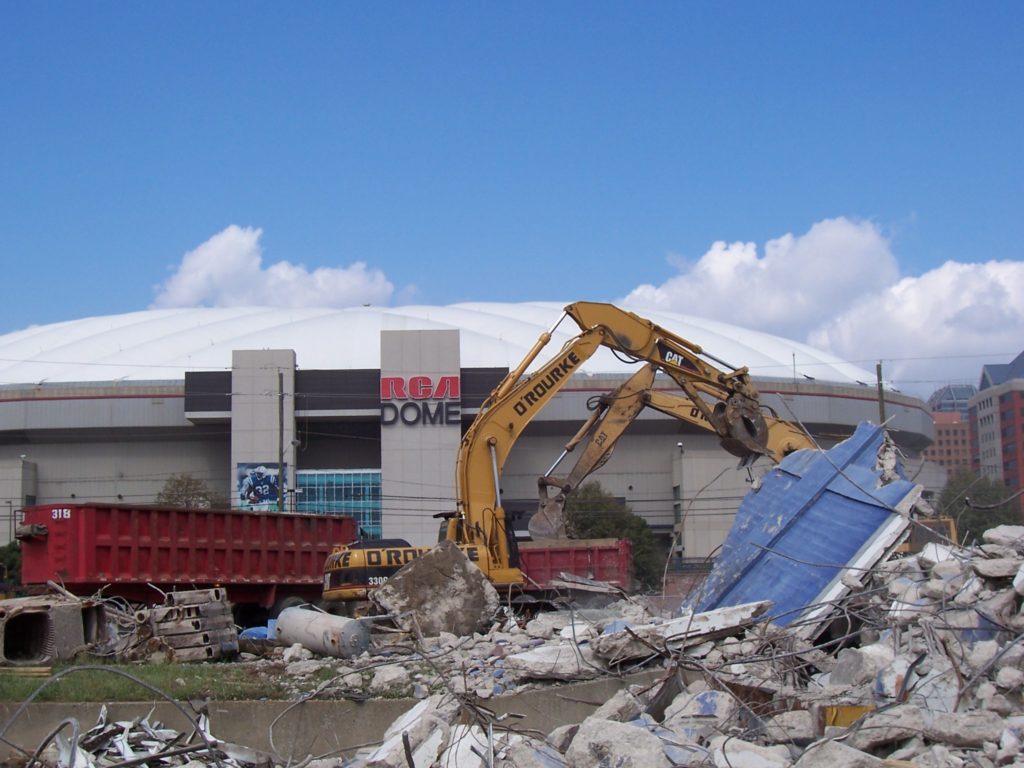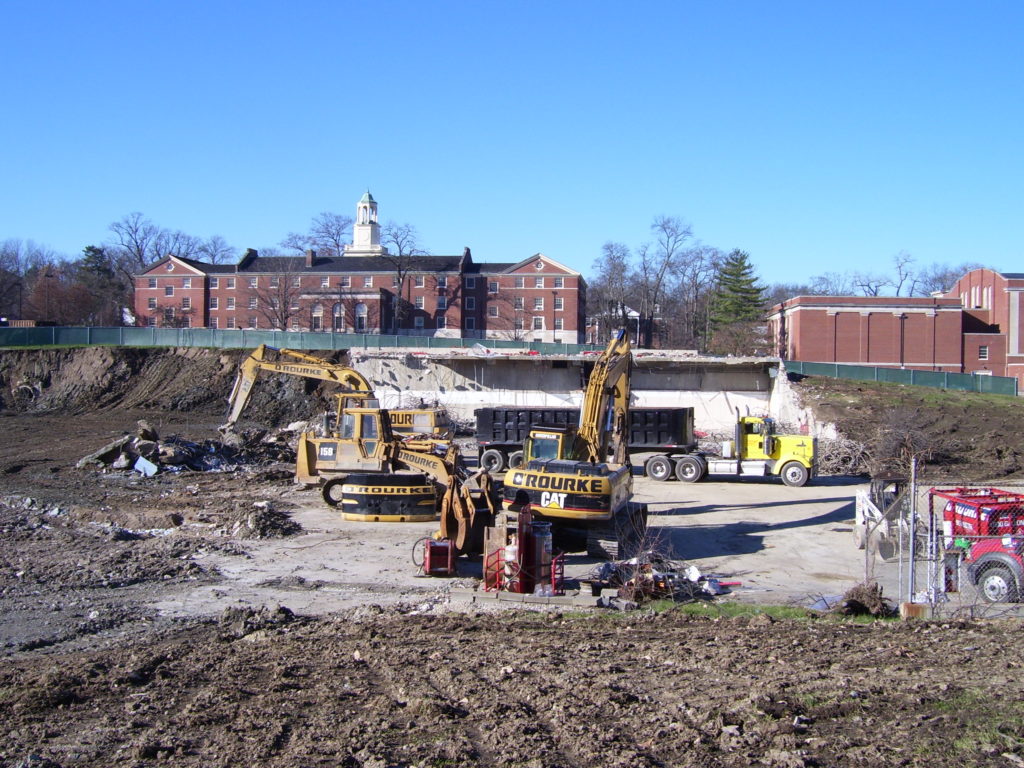When a stadium reaches the end of its lifespan, taking it down is far more complex than knocking down walls and hauling away debris. It requires precise engineering, advanced equipment, and an experienced team capable of coordinating every detail. O’ROURKE Wrecking Company has led some of the most recognized stadium demolition projects across the United States. From professional sports venues to collegiate arenas, our team manages every phase safely and efficiently.
O’ROURKE leads stadium demolition with an engineering-first process, proven field controls, and clear communication with every stakeholder. We plan the means and methods, manage permits, coordinate with public agencies, and deliver clean, graded ground that is ready for construction.
Ready to talk through your stadium or arena demolition? Request a plan and timeline today.
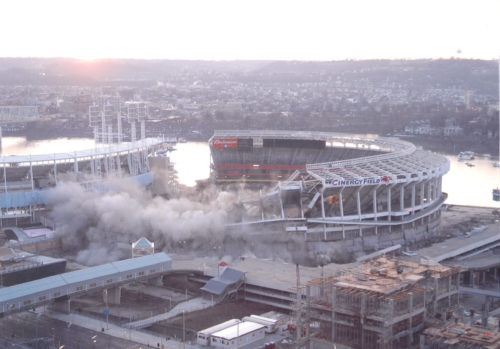
Safe and Strategic Stadium Demolition
Every stadium demolition project begins long before equipment arrives on site. O’ROURKE develops detailed work plans based on engineering studies, 3D modeling, and safety assessments. These plans define the sequence of removal, load paths, and safety buffers.
We collaborate with engineers, owners, and municipalities to minimize disruption and protect nearby infrastructure. Our methods are designed for both safety and precision, especially when a stadium is located in a dense urban environment or near active roadways.
Each structure presents unique challenges, post-tensioned concrete, cantilevered seating decks, or complex steel truss systems. Our team evaluates these structural conditions and chooses the right combination of mechanical and controlled methods to bring them down efficiently. By managing logistics, scheduling, and permitting internally, O’ROURKE ensures that every step aligns with project timelines and safety standards.
Stadium Types We Demolish
- Professional and minor league stadiums and arenas
- Collegiate stadiums, fieldhouses, and natatoriums
- Multi purpose domes and enclosed venues
- Racetracks and grandstands
- Training complexes and practice facilities
Demolition Methods and Equipment
The size and construction type of a stadium determine which demolition approach is best. O’ROURKE uses a range of specialized techniques, supported by a modern fleet of heavy machinery and equipment designed for large-scale dismantling.
Controlled Implosion
When conditions allow, controlled implosion can bring down a massive structure within seconds. This method requires extensive preparation—structural modeling, blast sequencing, vibration monitoring, and public safety planning.
Our engineers work with explosive specialists to design a pattern that ensures the structure collapses inward on its footprint. Crews perform weeks of interior stripping and pre-cutting before the blast, ensuring the load paths behave as predicted. After detonation, cleanup operations begin immediately, with dust suppression and debris hauling handled according to environmental guidelines.
Mechanical Demolition
Most stadiums are dismantled mechanically. This method uses high-reach excavators, hydraulic shears, and concrete pulverizers to remove structural components in phases.
Sections of the grandstand, press boxes, and structural steel are taken down methodically, ensuring that each step maintains site safety and stability. O’ROURKE’s operators use advanced attachments to shear through reinforced concrete and separate materials for recycling.
By combining high-reach equipment with precision cutting tools, our crews can dismantle massive structures efficiently without disturbing surrounding properties.
Selective and Interior Demolition
Before the main structure is removed, O’ROURKE performs selective interior demolition. Seats, signage, scoreboards, lighting systems, and HVAC components are removed for reuse, recycling, or proper disposal.
This stage allows for safe handling of electrical and mechanical systems and ensures that all materials are documented before removal. It also supports sustainable waste management, reducing the total debris volume that enters landfills.
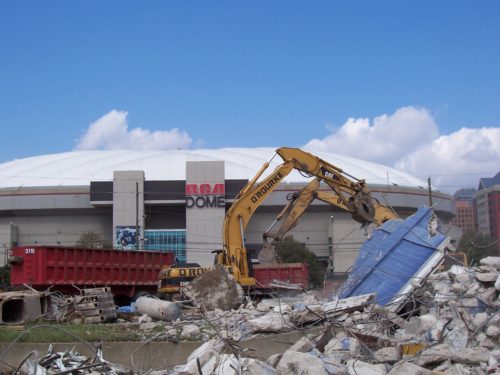
Environmental Responsibility and Material Recycling
Stadium demolition often produces tens of thousands of tons of concrete, steel, and other materials. O’ROURKE has a long record of environmentally responsible practices that emphasize recycling and reuse.
Our crews separate materials on site using magnets, screening systems, and mobile crushing units. Concrete is crushed and repurposed as aggregate for new construction. Steel and metals are sorted and sent to regional recycling facilities.
On average, more than 90 percent of materials from a stadium demolition are recovered for reuse or recycling. This approach conserves natural resources and supports sustainable redevelopment of the site.
O’ROURKE complies with all EPA, OSHA, and state environmental standards, ensuring that air quality, stormwater management, and noise control are addressed throughout the project. When hazardous materials such as asbestos or PCB lighting are present, our environmental division handles abatement prior to demolition, keeping the process compliant and safe. Our goal is to leave a clean, developable site ready for new construction or public use.
Risk Management and Demolition Controls
Structural Stability
Sequencing and temporary measures protect stability as elements come down. We cut and remove members in a way that prevents unplanned loads. Engineering reviews confirm each step before crews proceed.
Dust, Noise, and Vibration
Air monitors track particulate levels. Misting systems address dust at the source and at perimeter lines. We set noise windows and use mufflers and equipment placement strategies. Vibration monitors track readings near sensitive structures and utilities.
Adjacent Property Protection
Many stadiums share property lines with arenas, labs, or housing. Our plans include debris curtains, scaffolding, and controlled exclusion zones. We survey adjacent buildings before work begins and document conditions with photos and video.
Utilities and Critical Infrastructure
Gas, electric, steam, chilled water, and communication lines often run under concourses and plazas. We verify routes, install protection where needed, and maintain access for campus and city operations. Any temporary outages are coordinated with owners.
Emergency Action Planning
We prepare for weather, equipment failures, and unexpected conditions. The team conducts drills, confirms backup communications, and maintains access for emergency response.
Why Choose O’ROURKE for Stadium Demolition
Selecting the right demolition contractor determines whether a complex stadium removal stays on schedule, on budget, and within safety limits. O’ROURKE Wrecking Company provides unmatched experience in large-scale and high-profile projects.
- Proven Track Record: Decades of successful stadium, arena, and sports complex demolitions nationwide.
- In-House Resources: Company-owned fleet of cranes, excavators, and specialized demolition attachments maintained to the highest standards.
- Full-Service Capabilities: From pre-demolition abatement to site restoration and grading.
- Experienced Crews: Long-term employees trained in heavy industrial demolition and environmental safety.
- Client Collaboration: Transparent communication, scheduling updates, and dedicated project management.
Get Started on Your Stadium Demolition Project
Every stadium tells a story, but when it’s time for a new chapter, you need a demolition partner that understands scale and precision. O’ROURKE Wrecking Company brings decades of expertise, advanced equipment, and a commitment to safety that has earned the trust of cities, developers, and sports organizations nationwide.
Our team works with you from initial planning to final site restoration, ensuring that every phase meets engineering standards and environmental goals. If you’re planning a stadium demolition, contact us today to schedule a consultation or request a proposal.



